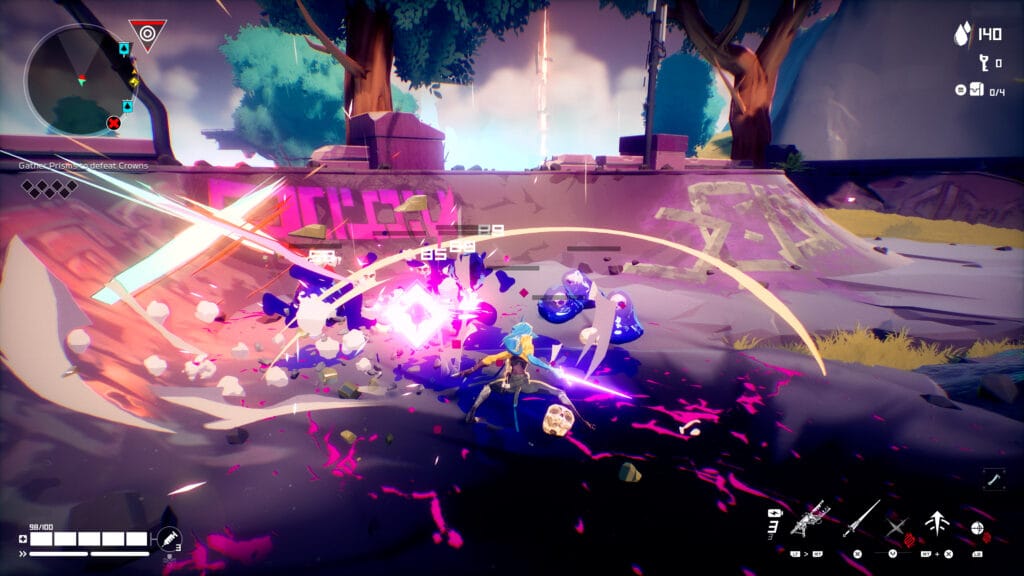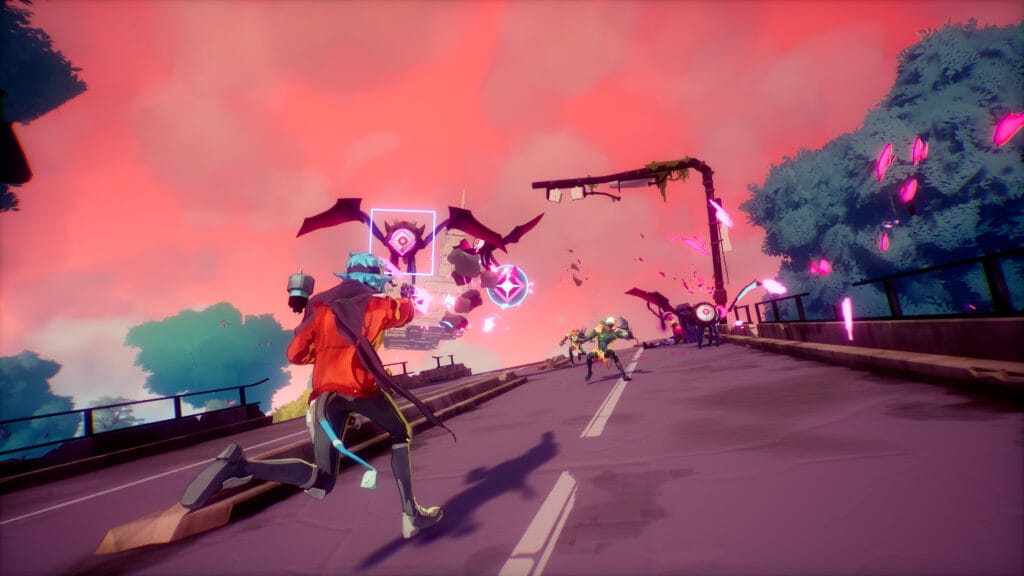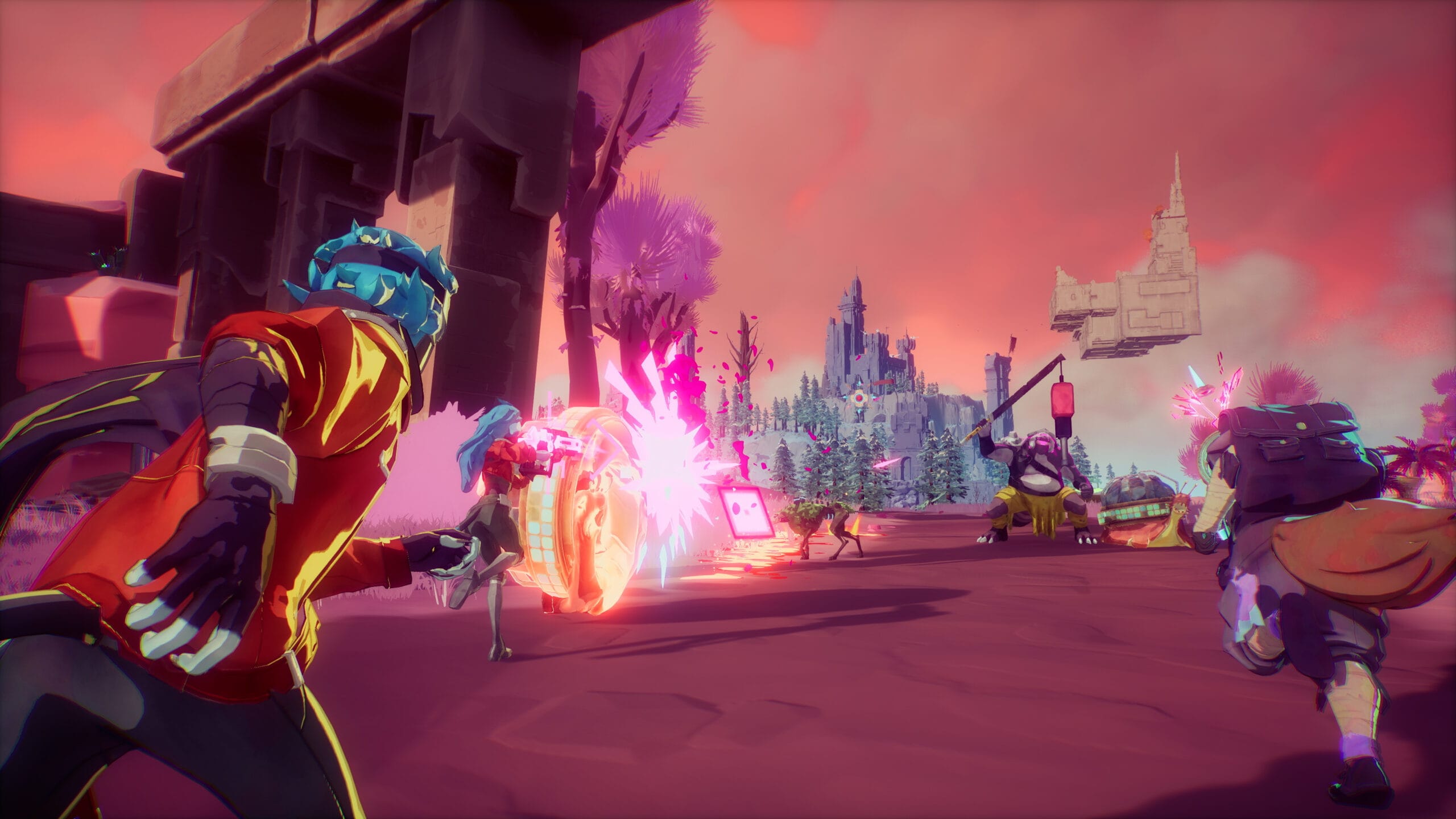Hyper Light Breaker definitely isn’t what I ever would have expected from a sequel to Hyper Light Drifter. The shift from an isometric action game to a fully 3D roguelike extraction game is weird, but it works. I’ve put some decent time into the current Early Access version, and while it’s still got a ways to go, I’m feeling good about where it’s at.
It’s a slow burn
Runs in Hyper Light Breaker are on the longer side. A run doesn’t end with a single death as is standard with roguelikes. At the start of each cycle, you’re given four lives to spend across as many runs into the Overgrowth as you can manage. You either have to run through all four of your lives (thus ending the current cycle) or defeat the three Crowns (bosses) and take down the Abyss King to reset the world and start anew. What little exists of the meta-progression – unlocking various passive buffs, increasing stats, and expanding merchants’ stock and how much they can upgrade gear – largely happens once the cycle is over. At launch this meant you had to complete one full cycle to unlock the ability to carry any medkits. This has since changed, but it highlights the ways Hyper Light Breaker is slow to unfurl.
It’s a small change in structure from most roguelikes as you’re not rapidly failing and learning. Progress is measured over a longer time frame and often incremental. Each cycle can last anywhere from a handful of minutes to an hour depending on how long you’re able to survive. I was lucky to live longer than a few minutes at a time during the early hours as Hyper Light Breaker doesn’t hold back. Enemies often attack in large numbers and are relentless once they’ve caught sight of you. Until you’ve gotten some gear and some much needed stat boosts, you have to be cautious and be ready to extract at a moment’s notice.
The early hours are largely one of preparation then. Every excursion is as much about building yourself up for the current cycle as much as it is establishing a stockpile for future cycles to get up and running faster. My first few cycles were slow because I didn’t come away with much. I wasn’t sure what most of the stats did and which I should consider focusing on (ops, as it turns out; higher drop rate for rarer gear helps a ton). Once I had a bunch of equipment stashed in my vault and understood what to keep and what I could ditch or sell, I started getting somewhere. I still had to learn how to fight each boss, but I could consistently obtain Prisms to unlock them. I could explore the world for a while instead of dying almost immediately or needing to extract soon after arriving.
After a certain point, the pace shifts dramatically toward giving you a lot of materials for upgrades, at which point I was settled enough that I could spend them freely and see tangible benefits quickly. Cycles started lasting longer as well, which made the increased rewards feel apt.

Combat is chaotic – in a good way
Most times a fight breaks out, I’m usually dealing with anywhere from a few to almost a dozen foes; if not immediately, then very soon after initiating battle. Rarely does a battle involve only a couple of basic enemies and end with their defeat. At first it can feel overwhelming. Even if the enemies aren’t being particularly aggressive, sheer numbers alone can make things difficult, especially as the strength of enemies increases over the course of a cycle.
Like Hyper Light Drifter, this is a game where agility is rewarded. Zipping about the field dashing around foes is key. Just about every action can be canceled into a dash, which quickly emphasizes the need to be swift. This is not the kind of action where you’re committed to every move you make, where whiffed attacks have long recovery and are harshly punished for mistakes. The game wants you to be aggressive and does everything it can to push you to adopt that playstyle. That enemies attack in large groups is just one tool in its arsenal to achieve this end. It forces you to take initiative and act rather than play passively by waiting for the right times to strike.
Sometimes it feels like the sheer number of foes thrown at you is balanced with multiplayer in mind. I haven’t run into anything that’s felt impossible to take on solo, but it definitely feels geared toward co-op sometimes. The bosses are (or were) prime examples as they would regularly summon aid constantly. Fighting the boss itself is a challenge already. Doing so while also fending off additional foes was a bit much at times. (The spawn rate has since changed from launch.) It makes sense why they’re designed this way – a three-on-one fight is tricky to properly balance when roguelikes have tons of potential for game-breaking builds – though it is the least interesting way to solve the problem.
Solo play is viable
Though Hyper Light Breaker emphasizes cooperative play, it works perfectly well playing solo. All my playtime has been spent in single-player and it’s been great. I was worried it would feel lacking without a partner or two in tow, as that’s always a concern with any game with a heavy focus on multiplayer, but Hyper Light Breaker so far hasn’t felt lacking. Even during the moments where the balance felt geared toward cooperative play, it manifested more in a “this would probably be easier/more manageable” way than “this is designed specifically with X number of players in mind.” It’s a small thing, but one I appreciate given the inherent difficulties of balancing around two different modes of play.

It’s very early
I feel like this should be obvious for any Early Access game, but with games like Hades and its sequel or Ultrakill launching in very well put together states, I feel like the expectations have risen. The core of Hyper Light Breaker is there and the fundamentals are great, but you can feel the myriad ways in which it is still very much a work-in-progress.
The in-game tutorials are sparse and don’t quite communicate the gameplay loop. Enemies will often spawn in odd locations, sometimes stuck inside the environment even. It only has two unique bosses currently, so you often end up fighting the greatsword wielding wolf multiple times in different arenas. Balance is still all over the place and regularly shifting. Little things that are by no means actual capital-P problems, but are indicative of where Hyper Light Breaker currently is. This is clearly in active development, the rough edges visible for all to see.
For me, that’s part of the fun of Early Access. Watching a game slowly come together is the entire appeal. It’s endearing to see the little imperfections everywhere that are expected to be gone in a proper 1.0 release. Makes seeing the final result more meaningful to see some of how it got there. How much I check in on it during the remainder of the Early Access period, I can’t say. I am glad to have gotten some experience in its current state, though, and am looking forward to seeing it grow.
Callum Rakestraw (he/him) is the Reviews Editor at Entertainium. You can find him on Bluesky, Mastodon, and his blog.





